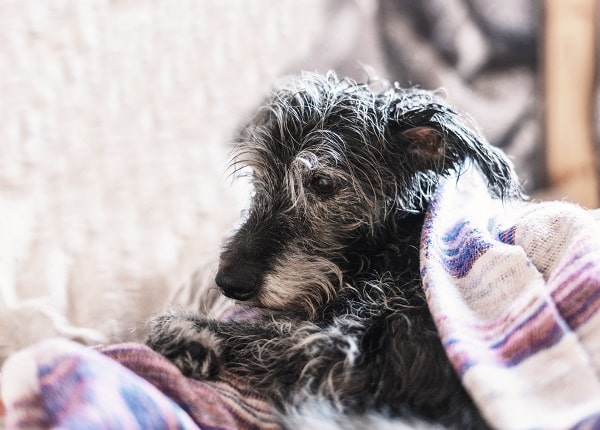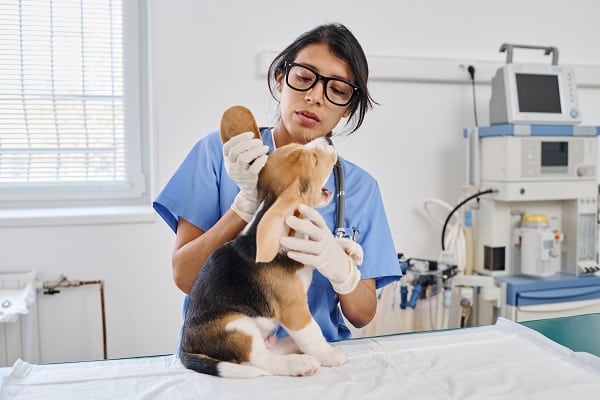Caring for senior dogs requires a keen understanding of the changes they undergo as they age. Just like humans, as dogs advance in years, their physical and mental needs shift. This guide delves into the unique aspects of ensuring that the golden years of a dog’s life are filled with health, comfort, and happiness. With focused attention to their dietary, health, and emotional requirements, dog owners can ensure that their elderly canines enjoy a quality life in their twilight years.
Contents
Understanding Senior Dog’s Life Stage

As dogs transition from their active adult years into their senior phase, the definition of “senior” can vary based on breed and size. For instance, larger breeds tend to age faster and may be considered senior at around 6-7 years, while smaller breeds might only enter their senior years closer to 9-10. It’s essential to recognize this stage and adjust care routines accordingly, keeping in mind the subtle signs like graying fur, reduced energy levels, or increased sleep.
Physical and behavioral changes are a natural part of a dog’s aging process. Dog owners might notice a decrease in stamina, increased sensitivity to cold or heat, or even a cloudy appearance in their eyes. Behaviorally, older dogs might become more reserved, show signs of confusion, or be less responsive to commands they once knew. Recognizing these shifts early helps in adapting their environment and ensuring they receive the necessary care.
Dietary Needs For Aging Canines

The dietary requirements of dogs evolve as they age, making it imperative for owners to stay informed. Senior dogs often have a slower metabolism, meaning they might require fewer calories to avoid unwanted weight gain. Moreover, they may benefit from food that is high in fiber, lean protein, and essential fatty acids, as these nutrients support joint health, digestion, and skin health, respectively.
While the basic nutritional needs remain somewhat constant – proteins, fats, vitamins, and minerals – the proportions and sources might change for older dogs. For instance, they might benefit from more easily digestible protein sources. In some cases, based on a vet’s advice, supplements like glucosamine can be added to support joint health or omega fatty acids to boost skin and coat health. Always consult with a veterinarian before making significant changes to a senior dog’s diet or introducing supplements.
Regular Health Check-ups

As dogs age, the importance of regular veterinary check-ups cannot be overstated. These visits provide an opportunity to catch and address potential health issues early on. Whether it’s dental problems, arthritis, or the onset of more severe conditions like heart or kidney diseases, early detection can make a significant difference in the management and prognosis of these ailments. Regular check-ups also allow for timely vaccinations and parasite prevention, ensuring that the senior dog remains protected.
In addition to standard check-ups, dog owners should be vigilant at home. Monitoring a senior dog for signs like increased thirst, changes in appetite, unusual weight loss or gain, or difficulties in movement can provide crucial information. By keeping a close watch and maintaining open communication with the veterinarian, the dog’s overall health can be better managed and optimized.
Exercise And Mobility

A senior dog’s exercise routine might look different than that of its younger counterpart, but it remains equally crucial. While they may not have the same energy levels, consistent moderate exercise helps in maintaining healthy joints and muscles. Activities such as gentle walks, swimming, or simple fetch games can be beneficial. However, the intensity and duration should be adjusted to the dog’s comfort, ensuring that they don’t overexert themselves.
Mental stimulation is another facet of a senior dog’s well-being. Brain games, puzzle toys, and training sessions tailored for their pace and ability can help in keeping their cognitive functions sharp. Just as in humans, a combination of physical and mental activities can significantly slow down age-related decline, ensuring that the dog remains active and engaged in its surroundings.
Grooming And Skin Care

With age, dogs often experience changes in their skin and coat condition. They might develop dry skin, thinning fur, or even some benign growths. Regular grooming practices, like brushing, can help in not only keeping the coat free from tangles but also in identifying any unusual skin conditions early on. Furthermore, brushing stimulates natural oil production, promoting a healthier coat and providing an opportunity for bonding.
In addition to coat care, attention should be given to other grooming aspects like nail trimming, ear cleaning, and dental care. Senior dogs, due to reduced activity, might have faster-growing nails, which, if left unchecked, can cause discomfort. Similarly, consistent dental care can prevent tartar build-up and related complications. All grooming practices should be done gently, considering the potential sensitivity of the aging canine.
Comfort And Living Spaces

As dogs enter their twilight years, comfort becomes paramount. Simple adaptations in their living environment can drastically improve their quality of life. Consider introducing softer bedding to cushion aging joints or ramps to assist dogs struggling with stairs. Non-slip mats can be a lifesaver for those with mobility issues, preventing potential falls and injuries on smooth surfaces.
It’s not just about physical comfort; emotional well-being is equally significant. Many senior dogs find solace in comfort toys or familiar items. These can help alleviate anxiety, especially in those experiencing cognitive decline. Ensuring that their living space is calm, safe, and free from frequent disruptions can provide them with the serenity they deserve in their golden years.
Emotional And Behavioral Care

Aging can bring about emotional and behavioral changes in dogs. Some might exhibit signs of cognitive decline, often likened to dementia in humans. Symptoms can range from confusion, disrupted sleep patterns, to increased vocalization. Addressing these changes requires patience, understanding, and sometimes professional guidance. It’s essential to maintain a routine, as predictability can be reassuring for them. Also, introducing brain-boosting toys and activities can aid in slowing cognitive decline.
Additionally, senior dogs might become more sensitive or reactive to changes in their environment. They might require more quiet time or become less tolerant of disruptions. Recognizing and respecting these changing boundaries is crucial. By doing so, one can ensure that their elderly canine companion feels understood, loved, and secure in its environment.
The Bottom Line
Ensuring the well-being of a senior dog goes beyond just physical care; it encompasses their emotional, mental, and overall quality of life. With the right knowledge, patience, and dedication, dog owners can navigate the challenges of aging and provide their furry companions with a comfortable, enriching, and fulfilling life in their later years. Through all the transitions and changes, what remains constant is the unwavering bond between a dog and its owner, a bond that only strengthens with time.


